When it comes to choosing hardwood flooring, there are many things to consider. There are various finishes, types of wood, and materials to name a few. There are also other considerations to think about such as site finished versus shop finished and which material and finish will be the most durable.
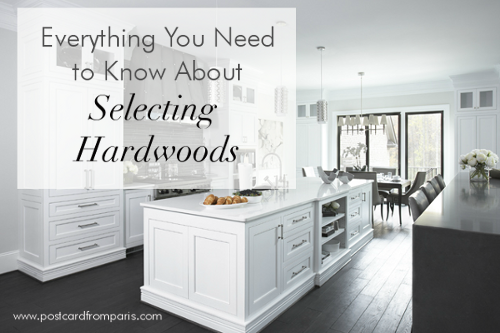
We decided to bring some experts in to provide all of the information you may need when selecting hardwoods. We've worked with the folks over at Burchette & Burchette for many years on many projects. Burchette & Burchette is a third generation, family owned-and-operated business located in Elkin, North Carolina. Since 1948, they have specialized in designing and handcrafting custom wood flooring and architectural elements.
We are honored to have B&B guest post for us today, sharing some insights and advice on selecting hardwood flooring.
***
Hardwood flooring is one of the most overlooked items in the home. However, it is a crucial and fundamental part of the design and function of the home.
1. What are several reasons for people to select engineered flooring over solid hardwood {i.e. concrete slabs, wide widths, etc.}? In wood flooring, there is solid or traditional construction, as well as engineered construction. Solid floors have been the staple for flooring for the last 400 years, but as surprising as it may be, many floors in very elite homes at the turn of the 19th century have engineered floors. We discovered this in several of our restoration projects when we needed to make a floor to patch in. We wanted to create something that was stable, would last a lifetime and that you wouldn't be able to tell a difference between the engineered product and the solid product. Thus we created a 3/4" engineered product with a 1/4" wear layer, the same {actually a little thicker} than a solid floor. This gives you a floor that can be installed over concrete or in higher humidity areas. It also allows you to make wider planks more stable as well. Second homes are perfect candidates for engineered flooring because the house sometimes is conditioned the same year round, which can cause a lot of stress on a solid floor.
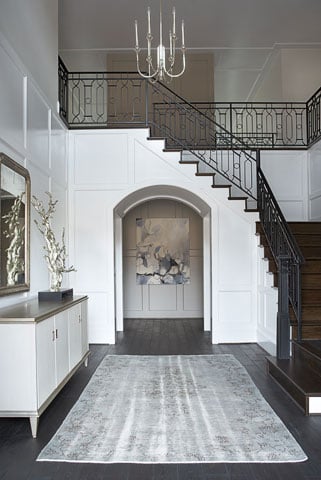
{Refinished plank French Oak floor with Italian black stain by Burchette & Burchette}
2. What is Burchette and Burchette's process of staining and how does your company avoid an end product that off-gasses VOCs {Volatile Organic Compounds} and other harmful chemicals that can harm indoor air quality? For our staining process, we use all natural earthen products to color the wood, just like it was done prior to oil-based stains introduced in the 1920s and 30s. This method allows us to get very original colors without any harmful chemicals or VOCs from the stain. Our finishes have been designed for us, so that we can apply them by hand in our facility and then cure them on a UV system, giving the look accomplished by hand finishing but also the durability and 0 VOC rating we get from UV cured finishes.
3. How many times can your hardwoods be refinished? Our hardwoods, solid or engineered, can generally be re-sanded three to five times depending on the mechanic doing the sanding. However, our finishes are meant to be maintained. We hope that our floors are never re-sanded, but the hand work and finish treatments we do are maintained for the duration of the floor.
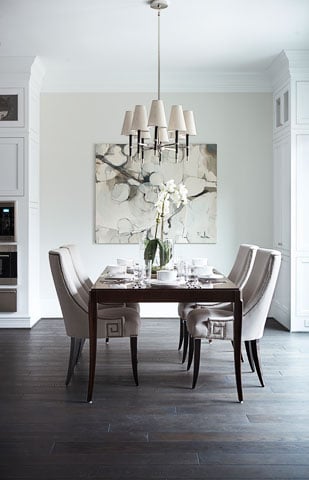
4. What are the pros and cons to site finished versus shop finished hardwoods? A site finished floor is great for a traditional 2 1/4" to 4" floor. It will give you a serviceable, hardwood floor with a stain and any number of various finishes. However, plank floors and unique finishes are our specialty, and the best way to accomplish these floors is to hand finish them in a controlled environment. A controlled environment gives you the ability to do multi-step colors and finishes with a much higher level of success. There are many outliers that can't be controlled on the job site that can be in the craft shop.
5. Explain the term quarter-sawn hardwood. Grain orientation of the wood is another important decision. Most floors are what we call flat sawn, which gives you a cathedral grain that varies throughout the plank. The log can be turned and cut in such a fashion though that all the grain is vertical down the length of the board. If the grain is cut to where it is visibly a 90 degree angle from the end of the board, we call that quarter sawn. If it is cut on a 45 degree angle from the end of the board, we call that rift sawn. These cuts make a very different look on each plank and can drastically change the look of any species of wood. The rift and the quarter sawn cuts are the most dimensionally stable way to cut the tree.
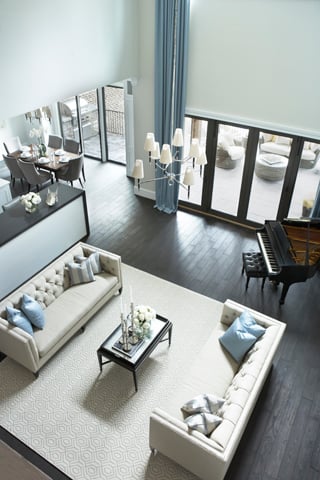
6. What parts of your home would you not recommend hardwood be used? The garage. Although, we did do an end grain Belgium block one time for a guy's Ferrari collection that was pretty cool. Bathrooms might be an exception as well depending on amount of use, location, etc.
7. How do you go about selecting the type of wood to use {hickory, oak, etc.}? Choosing the species is many times the first step to picking the wood. It often takes an education process. There are hundreds of species available around the world. We offer 70 because we have found those 70 to be serviceable floor options. Each type of wood varies in hardness and stability, color, grain and character; each component should be considered when making a selection.
8. Are certain materials or finishes more durable {i.e. with kids, dogs, etc.}? We try to evaluate each one of our customer's situations to suggest the best finish for their needs. We offer three different finish options. These finishes paired with specific woods give you very specific pros and cons. European oils, for instance, seem to be great for people with dogs, while our signature finish is hands down the best finish for low maintenance desires of the customer.
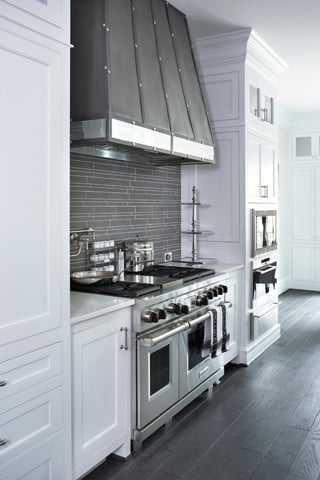
9. What's the best way to care for hardwood or steps to prevent scratches, etc.? Keep your floor clean. I know that seems elementary, but walk off mats at the doors help to detour fine grit from outside from getting in. The cleaner the floor stays, the longer it will last. Grit and dirt work like an abrasive as you walk across the floor. Also, use felt tabs on any furniture that you slide around. And everyone with a roll around office chair, make sure you have rubber casters instead of plastic or metal. Vacuum and use a PH neutral finish. Don't get bleach on your floors. Things that are acidic {like orange juice} can etch into a finish as well.
10. What advice do you have for selecting the right finish? Call us. Do your homework. Finishes fall into two categories in my opinion: maintenance and low maintenance. Some finishes are designed to have continual maintenance to keep them looking great. Low maintenance finishes like urethanes, you will have to keep them recoated or re-sanded. There are no products you can use to easily touch them up. We try to evaluate certain things like is the house on the beach, do you entertain a lot, what species are we looking at, do you have a large dog that drives us to suggest the proper finish for the project, etc.
For more information about Burchette & Burchette, visit their Web site or give them a call {336-835-6409}.
Photos by: Rachael Boling
